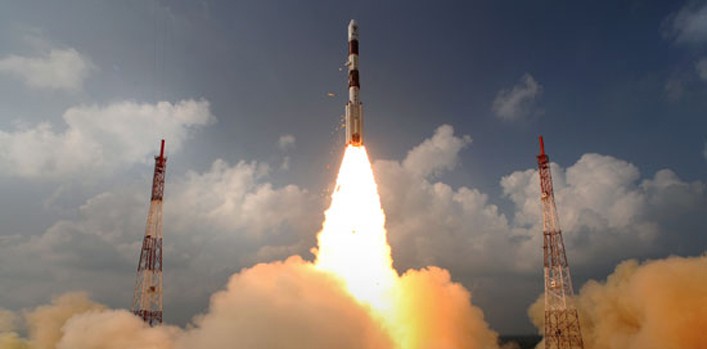ISRO has successfully put IRNSS 1F, the sixth satellite in India’s Regional navigation system (IRNSS) into the orbit today. The 1F is the penultimate satellite of India’s porposed regional navigation constellation, which once complete, would put India in a league of select few to have their own such systems in place.
IRNSS-1F is the sixth navigation satellite of the seven satellites constituting the Indian Regional Navigation Satellite System space segment. Its predecessors, IRNSS-1A, 1B, 1C, 1D and 1E were successfully launched by PSLV-C22, PSLV-C24, PSLV-C26, PSLV-C27 and PSLV-C31 in July 2013, April 2014, October 2014, March 2015 and January 2016 respectively.
ISRO has further acknowledged, that all the five satellites are functioning satisfactorily from their designated orbital positions.
As for a brief on what IRNSS is, it is India’s own, indigenously developed navigation satellite system, similar to the very popular GPS and GLONASS. The difference here though is, that GPS is US made while GLONASS belongs to Russia. IRNSS, is India’s own, 7-satellite strong, regional navigation satellite system, deployed specially to keep a close watch on the Asian region.
IRNSS-1F has a lift-off mass of 1425 kg. The configuration is similar to that of 1A, 1B, 1C, 1D and 1E. The two solar arrays of the penultimate constellation satellite consisting of Ultra Triple Junction solar cells generate about 1660 Watts of electrical power. Sun and Star sensors as well as gyroscopes provide orientation reference for the satellite. Special thermal control schemes have been designed and implemented for some of the critical elements such as atomic clocks.
IRNSS -1F carries two types of payloads – navigation payload and ranging payload. The navigation payload will transmit navigation service signals to the users. This payload will be operating in L5 band and S band. A highly accurate Rubidium atomic clock is part of the navigation payload of the satellite. The ranging payload of IRNSS-1F consists of a C-band transponder, which facilitates accurate determination of the range of the satellite. The satellite also carries Corner Cube Retro Reflectors for laser ranging.
The sixth satellite was launched by PSLV-C32 into a sub Geosynchronous Transfer Orbit (sub GTO) on March 10, 2016 at 16:01 hrs (IST) from Satish Dhawan Space Centre (SDSC) SHAR, Sriharikota.
The Tech Portal is published by Blue Box Media Private Limited. Our investors have no influence over our reporting. Read our full Ownership and Funding Disclosure →







